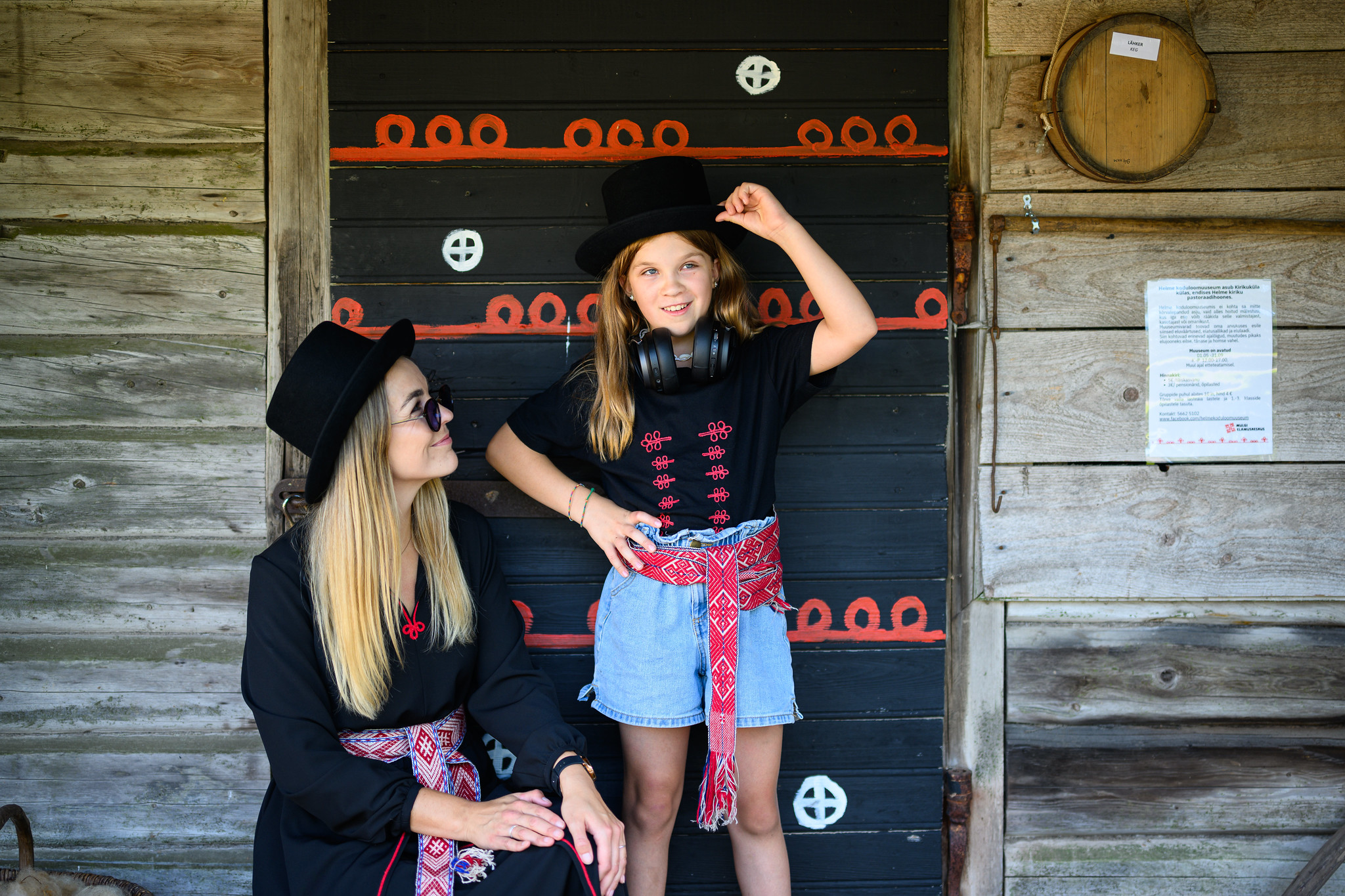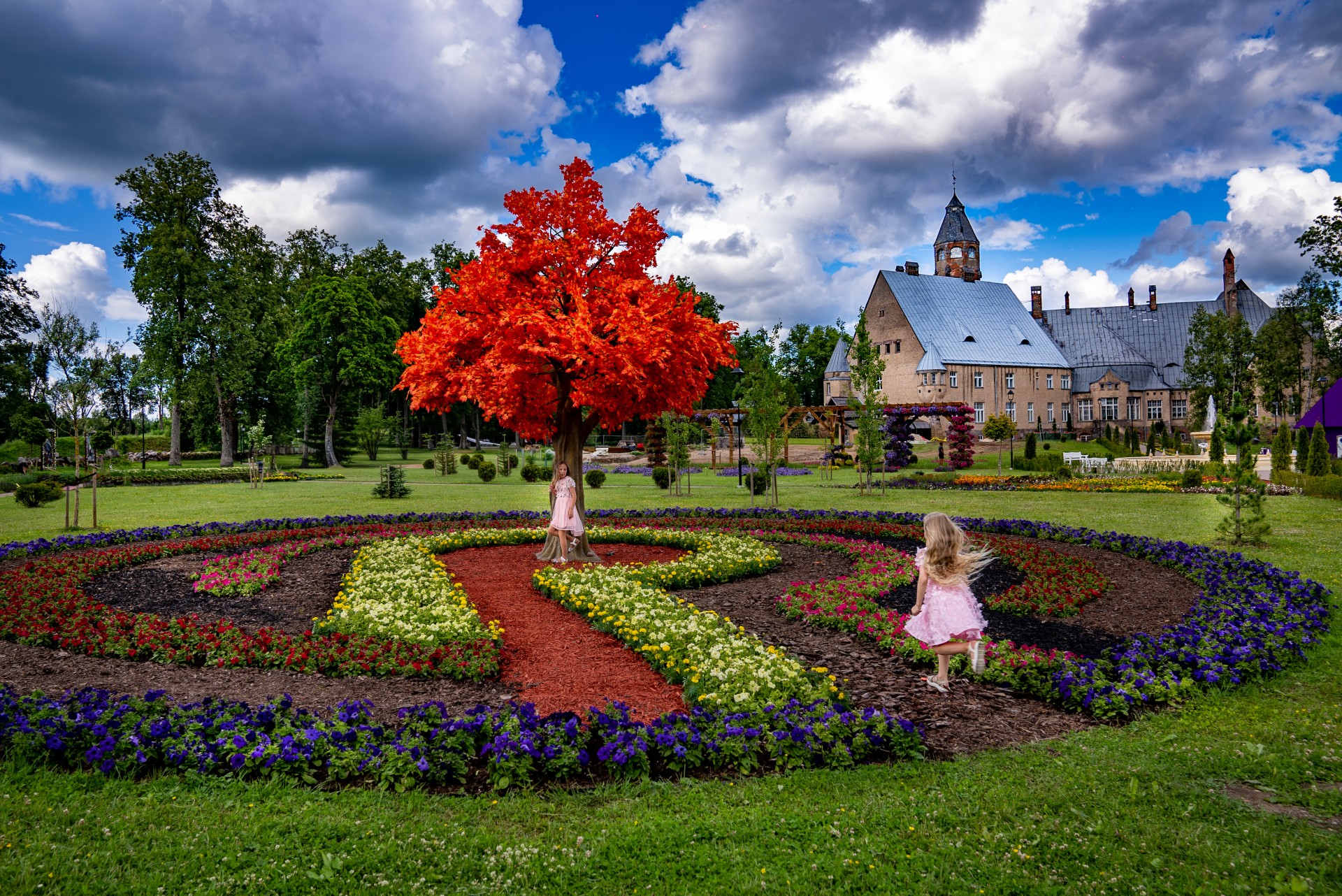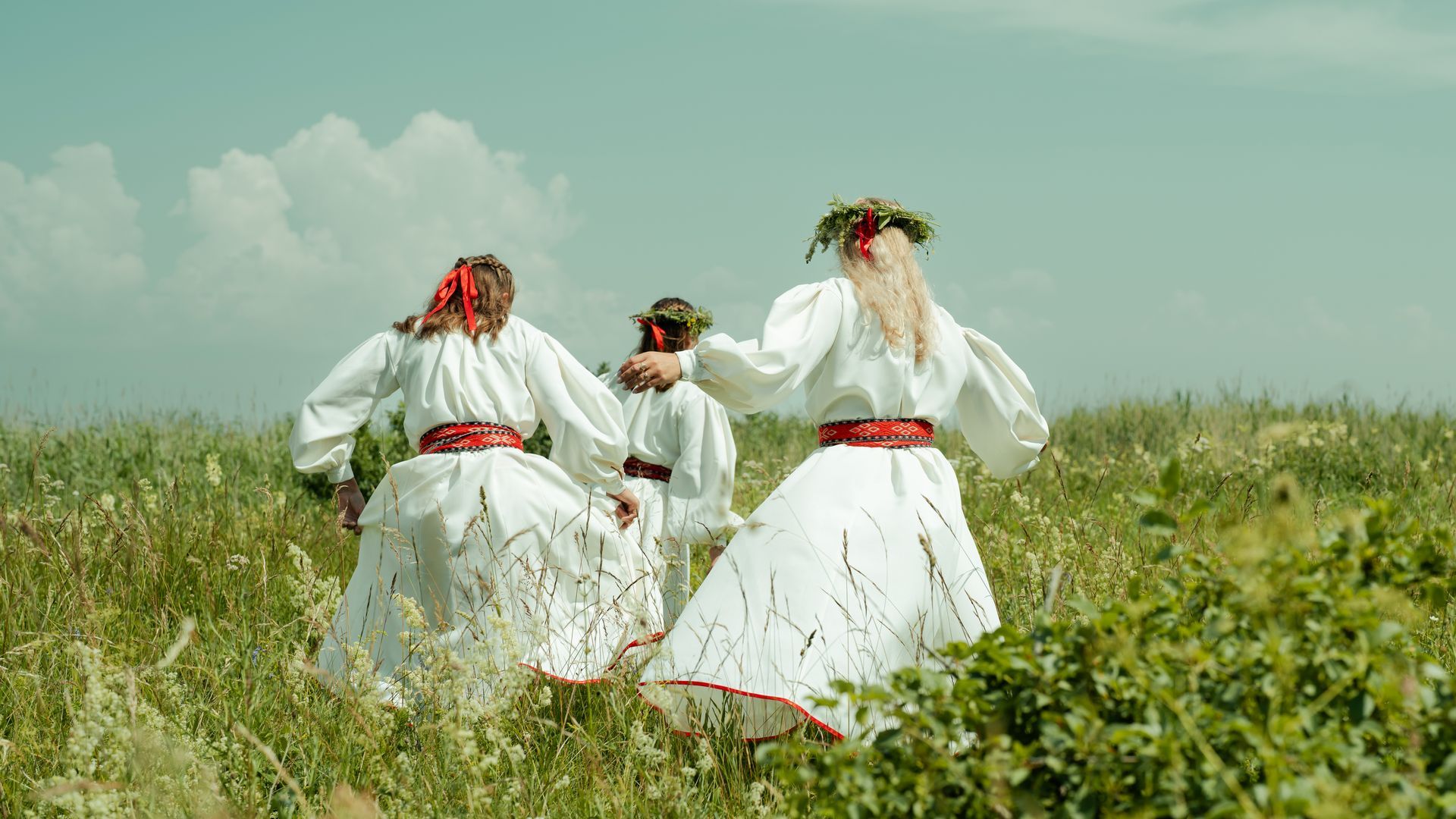
The cultural heritage of Mulgimaa
South of Viljandi is the historical homeland of the Mulgi dialect, whose speakers have greatly influenced Estonian culture and cuisine.
Mulgimaa is an area in South Estonia primarily characterized by its dialect.
However, a closer look at this regional culture reveals much more: a rich cultural life, an exciting history, and a strong common identity as Mulks, or Mulgid, as the inhabitants of the region are called in Estonian.

Traditional clothing from Mulgimaa includes a long woolen kaftan.
Before the advent of artificial dyes, brown yarn or fabric was soaked in iron-rich water from nearby bogs to achieve the characteristic black color.
The history of Mulgimaa
The land here is the most fertile in Estonia, so the local farmers have always been quite prosperous.
Mulgimaa's heyday was in the second half of the 19th and the early 20th century. The Civil War in the United States caused a long-lasting cotton shortage in Europe. The Mulgids, who exported linen, were able to fill this gap.
The Mulgi people were the first farmers in Estonia to begin buying out their farms in the 19th century. They believed that genuine wealth should be channelled into education and real estate, rather than adornments. Many families gave their children a good education. As a consequence, Mulgids were among the first Estonians to rise to the ranks of the intelligentsia, gain power, and actively shape Estonian culture.
Mulgimaa includes five parishes: Halliste, Helme, Karksi, Tarvastu, and Paistu. Once you reach Mulgimaa, you will notice wooden sculptures depicting the region's traditional clothing: a black kaftan with red trim and high black hats with wide brims. This is the outfit the former president of Estonia, Toomas Hendrik Ilves, wears on special occasions.

These wooden sculptures are in almost every village in Mulgimaa.
Try to find them all!
Did you know... ?
- The best place to learn about Mulgimaa's history and culture is the Mulgimaa Experience Centre, located on a former farm complex.
- According to the 2021 census, 14,380 people in Estonia speak Mulgi. The town of Abja Paluoja is considered the unofficial capital of Mulgimaa; you may have the chance to hear the Mulgi dialect spoken here.
- Mulgimaa has its own official flag. The blue symbolizes flowering flax fields, the black stripe and red pattern the men's traditional kaftans, and the five knots represent the five parishes of Mulgimaa.
- There are festivals every year celebrating Mulgi culture with music, dance, handicrafts, and traditional food. The biggest events are the Honey Festival in Karksi-Nuia, the Mulgimaa Accordion Festival in Abja-Paluoja, and the Urissaare Country Festival.

Photo author: Sven Zacek, Visit Viljandi, Mulgimaa Experience Centre
What to eat in Mulgimaa
Mulgi puder — 2024 addition to UNESCO's List of Intangible Cultural Heritage
Mulgi puder is one of the most typical dishes you can seek out in the region. It is made in local cafeterias, for school lunches, and during community gatherings and celebrations. Restaurants offer it on their menus, and it's packed in jars and sold at supermarkets. Mulgi puder was even added to the UNESCO List of Intangible Cultural Heritage in 2024.
Potatoes and barley are cooked into a thick stew and served with sour cream and fried pork knuckle or a side of vegetables. Mulgi puder provided farmers with the energy they needed to work in the fields.
Places to find mulgi puder around Estonia
- During the summer, the Mulgi Experience Centre will have it at their cafe.
- The Open Air Museum in Tallinn usually offers mulgi puder at the Kolu Inn.
- Tikupoiss is a roadside restaurant on the main highway between Tallinn and Tartu. The interior design is inspired by Mulgimaa, and they have surprisingly good food, including mulgi puder.
Barley is also featured in the traditional Estonian Christmas dish from Mulgimaa, mulgikapsad, braised cabbage with barley and pork.
When you visit Estonia, you'll likely come across kama on a dessert menu somewhere. This flour mixture is another Mulgi addition to Estonian cuisine. It's made from roasted rye, oats, barley, peas, and beans — what was left over in the cellar after a long winter. You can find kama in cakes, yogurt, kefir, and whipped cream. There's even a chocolate bar made with kama.
If you have a sweet tooth, try a Mulgi korp, a bun filled with a mixture of kohupiim (Estonian quark), eggs, and sugar.

Photo author: TaaVID Meedia
Places to eat in Mulgimaa
While you're in Mulgimaa...
The seasonal displays at Taagepera Castle are worth a stop!

Where to unwind in Mulgimaa
In Mulgimaa, green meadows, dense forests, clear lakes, and meandering rivers are perfect, if you're looking to finding peace outdoors.
One of the area's best hiking trails is the 2.6-kilometer-long Õisu hiking trail, which starts near the manor of the same name. The first part of the trail follows the slope of the river valley with views of Vidva Creek's rapids. The second part continues along the opposite bank of the creek on lower, more forested ground, allowing you to take in the view of the sandstone outcrops on the other side.

Photo author: Kristiin Elmat, Visit Viljandi

Start planning!
Use our interactive map to find destinations, discover new activities, and design a travel plan.
Get inspired
Last updated
30.12.2025